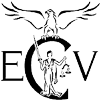Abstract
Risk Management / A Comparison of Claims and Reality
Six years ago, GAMP® 5 presented the first risk management concept that covers and defines the entire life cycle of a computerized system. Expectations for this risk management system are high, as knowledge of the potential risks is the key to deciding which measures are necessary and which are dispensable, both for validation projects and during normal systems operation. The seven GAMP risk management building blocks provide a multitude of starting points for an efficient and lean approach. After six years of practical experience, it is logical to attempt an intermediate assessment in order to reveal to what extent claims translate into reality. In real life, implementation of the GAMP risk management often shows deficiencies, resulting in smaller than expected benefit. This effect may be countered by the competent and confident implementation of methods and tools, deliberate acceptance of risks and the purposeful collection and processing of experience during the periodic evaluation. The path leading to this result is not set in stone; it requires constant diligent and focused analysis of all deficiencies identified, as well as the readiness for continuous development and improvement. Without improved risk management, the full potential of an efficient and target-oriented validation will never be realized.
Zusammenfassung
Mit dem GAMP® 5 wurde vor sechs Jahren erstmalig ein Konzept für ein Risikomanagement präsentiert, das den gesamten Lebenszyklus eines computergestützten Systems bestimmt. Die Erwartungen an dieses Risikomanagement sind hoch. Denn die Kenntnis der potenziellen Risiken ist der Schlüssel zur Entscheidung über notwendige und über verzichtbare Maßnahmen, sowohl im Validierungsprojekt als auch im regulären Betrieb des Systems. Die sieben Bausteine des GAMP®-Risikomanagements bieten vielfältige Ansatzpunkte für eine effiziente und schlanke Vorgehensweise. Es liegt daher nahe, nach sechs





